Martin Edwards's Blog, page 74
June 4, 2021
Forgotten Book - The Dust and the Heat, aka Overdrive
In saying this, I realise that the story may not be to every taste. At one level, it's an account of a long-running corporate vendetta involving industrial espionage, that ends up in a civil court case. Gilbert's legal expertise is much in evidence - early in the story there is a sub-plot involving rights of way, something you don't find in Dick Francis, say, or Len Deighton - and it may be that my own legal interests bias me in favour of Gilbert's clever and original use of (relatively) recondite material.
But even if that is the case, there is much for any reader to savour here in the character study of a ruthless entrepreneur. Oliver Nugent proves to be a formidable and dangerous man of war, and equally menacing in peacetime when he's wearing a suit. At first, you may think that there is something heroic about him, but Gilbert is scrupulous in showing the dangers into which Nugent's single-minded win-at-all-costs philosophy leads him. My guess is that Gilbert was influenced in his portrayal by his own experience of business life, though I'm sure he was far too smart to base the character on a single recognisable individual.
The book begins with a postscript, and although the action is spread over years, the writing is taut and engaging. We don't learn enough, perhaps, about Nugent's German wife, despite her connection with a key character who lurks in the background throughout, but as usual with Gilbert, most of the minor characters are sketched with verve as well as economy. Again, as is common with Gilbert, the finale is rather low-key. This is a technique of his which used to puzzle me, but now I can see more merit in it. And there is plenty of action, though he doesn't dwell on the various acts of violence.
There is quite a bit in the story about advertising, with nice satire of competive advertising. One thing is for sure: Gilbert was deeply, deeply sceptical about advertising. When, later in his life, I got to know him, he wrote engagingly to me on this subject; because I was a lawyer of a younger generation, who always believed that it was inevitable and right in the modern era that solicitors would be allowed to advertise, I didn't share his views, but there was undoubtedly some force in his reservations. He was a wise man as well as a very good writer.
June 2, 2021
The Queen's Gambit - Netflix review
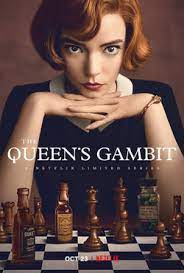
The Queen's Gambit, a seven-part series on Netflix, isn't a crime show. It's the story of a female chess prodigy. Not the most exciting subject, you might think, but you'd be wrong. This is a story told with a great deal of suspense, thanks to scripts by writer-director Scott Frank, who has to some extent honed his skills on crime films, including Malice and A Walk Among the Tombstones. It's been a huge hit during the pandemic, and I can see why. I gulped it down as quickly as the protagonist knocks back her drugs.
Beth Harmon is the prodigy. She's played as a child by Isla Johnston and Annabeth Kelly (both very good) and by Anya Taylor-Joy, whose performance is as mesmerising as her chess moves. At the age of nine, she's orphaned (her backstory is touched on repeatedly, but not in great detail) and goes into an orphanage. There she meets the janitor, who is playing chess by himself. She is fascinated by the game and he teaches her. The orphanage dishes out tranquillising drugs like Smarties and soon she is hooked on them, as well as on the dream of becoming a top chess player.
Beth is adopted by a hard-drinking woman, Alma, who is married to a rather dreadful, selfish man called Allston. Allston abandons them, but this does as least have a positive impact on the relationship between Alma and Beth. Alma doesn't understand chess, but she acts as Beth's manager - and keeps on drinking. Addictions of various kinds are a recurrent theme in the narrative and I gather that Walter Tevis, author of the original novel (and a high calibre writer whose other books included The Hustler), was himself an alcoholic.
I've always enjoyed playing chess, and I use to play in tournaments for my school team (not that I was brilliant, far from it) but I realised that in order to be a top player, you really have to commit yourself to it, and I never wanted to do that. Beth, however, does. I think it's very difficult to dramatise a story about chess and make it exciting to watch, but Scott Frank makes a success of it. The script is so strong that, even though Beth almost never loses, and even though I wasn't convinced by the drug use in the story (would it really make her play better for any consistent period of time?) I was glued to the screen. The setting, in the 1960s, is very well done, and I also like the way that Frank steers clear, for the most part, of simplistic stereotypes in terms of character and incident. When so many series of this length are full of padding and thus weakened, Frank's script seldom wastes words. It's a model of good commercial writing.
June 1, 2021
Howdunit wins CrimeFest's HRF Keating award

I'm truly, truly delighted that Howdunit has won CrimeFest's HRF Keating award for the best critical/biographical book related to crime fiction. No actual award ceremony, of course, in these pandemicky days, but above is the logo I've been sent to prove that I'm not imagining it! And I've just recorded a brief video as well. The award is all the more gratifying given the high calibre of the shortlist, one of the strongest I've ever featured on, which contains wonderful books that any fan would love to read.
There's another reason why this is a very special award as far as I'm concerned. The award is, of course, named after the late Harry Keating, a fine crime writer who was also an insightful critic and commentator on the genre. And Howdunit contains a nice section written by Harry, as well as various references to his excellent book about writing crime fiction.
This is an award for a collective effort, of course. Howdunit is what it is because of the remarkable calibre of the ninety contributions by Detection Club members, past and present. As I've said before, the generosity of the contributors (and the estates and agents of those who are deceased) was quite humbling.
Because so many people were, in the end, keen to contribute to Howdunit, putting it together proved a rather more demanding and complex task than I originally envisaged. But what a fun task it was, to receive all that material and to try to weave it all together in a way that readers would find interesting and enjoyable, whether or not they have any personal aspirations to write crime.
This really is a lovely moment in my writing life.
May 28, 2021
The Crooked Shore - cover reveal
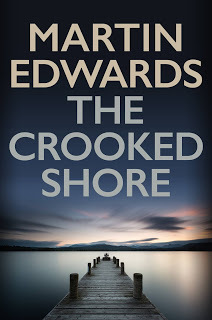
The Crooked Shore, the new Lake District Mystery - and the eighth in the series which began with The Coffin Trail - is published in the UK on 22 July. To celebrate, the publishers Allison & Busby have come up with a new style of cover which I understand may be adopted in due course for the backlist titles when they come up to be reprinted. And the cover image for the new novel is above.
The appearance of a new book is always a cause for celebration, at least on the author's part! It's hard for me to believe that Hannah Scarlett and Daniel Kind made their first appearance as long ago as 2004. A lot of water under the bridge since then, for them and certainly for me. The Coffin Trail marked quite a turning point in my career. It was one of the six books shortlisted for the Theakston's prize for best crime novel of the year and then the third in the series, The Arsenic Labyrinth, was shortlisted for the Lakeland book of the year.
So the Lake District has been a happy hunting ground for me in all kinds of literary ways, as well as a wonderful place to conduct research. While developing the series, I've tried to ring the changes, not just by varying the locations of the mysteries, but also by utilising a range of narrative techniques. I think this has helped to keep me, and the books, fresh.
It's quite some time since The Dungeon House appeared. That book was in itself an attempt to do something rather different with the series and it's a novel I'm particularly proud of. That same year, 2015, also saw the publication of The Golden Age of Murder, a book that had a transformational effect on my career. In the intervening years, I can honestly say that the question I've been most regularly asked by readers is when the next Lakes book is coming out. I'm grateful for the patience and their enthusiasm for the series has been motivating. I've been thinking about The Crooked Shore for a long time and it marks a significant development in the series in a variety of ways. There is a Netgalley link here It's a book I'm very glad to have written and I'm looking forward to publication with great enthusiasm - and hoping that readers new and of long-standing will find plenty in it to enjoy.
May 26, 2021
A String of Pearls by Margaret Wilson and Helen Shaw
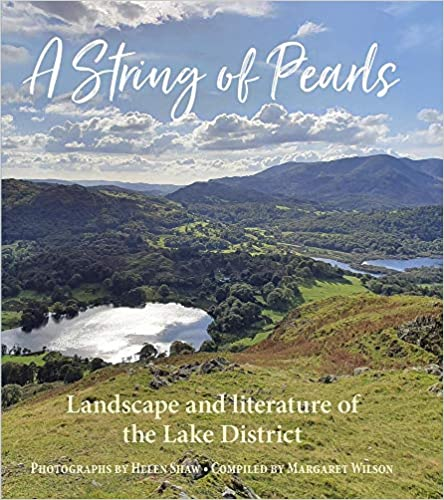
A while ago, I was intrigued to receive a request to grant permission for an extract from one of my novels to be reproduced in a new non-fiction book. Agreement was reached, and I've now received the finished product. This is A String of Pearls, compiled by Margaret Wilson with photographs by Helen Shaw. The subtitle is Landscape and literature of the Lake District and it's published by Merlin Unwin. I'd describe it as a coffee table book of the most attractive kind, sumptuously illustrated and appealing to anyone who is, like me, interested in books and the Lakes.
I found it particularly refreshing to have the chance to leaf through the book and luxuriate in some of the images, given that it's been impracticable for me to visit the Lakes for most of the last eighteen months. I did manage a brief and hugely enjoyable return trip last summer, which enable me to revisit some of the settings for The Crooked Shore (which will appear in July) but I hope to get back there for a longer visit before too long. In the meantime, the book has brought back some pleasant memories.
As one might imagine, the usual suspects are present and correct. So we have Wordsworth, Southey, Coleridge, Ransome, Potter, and De Quincey - naturally - as well as modern writers of note including Melvyn Bragg, Sarah Hall, Alfred Wainwright, and Hunter Davies and his late wife Margaret Forster. But there's an eclectic mix, with Bill Bryson, Chris Bonington, and Ian McEwan also featured.
The chosen extract from my work was a light-hearted passage from The Hanging Wood, illustrated with a lovely picture of Derwent Isle on Derwent Water. The other crime writers featured are Reginald Hill and Val McDermid, with extracts from two of their best books, The Woodcutter and The Grave Tattoo respectively. I was also pleased to see a piece from a much less renowned novel, High Wray by Ken Hughes. This was filmed as The House across the Lake, which
All in all, then, a nice book to leaf through and one that I'm glad to be part of.
May 25, 2021
Leo McNeir - Guest Post
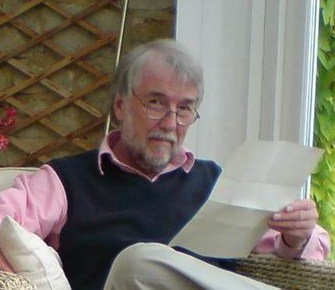
My first meeting with Leo McNeir, a fellow British crime writer, was in the unlikely but delightful location of Honolulu, when Left Coast Crime was being held in Hawaii. We later went out for dinner in a restaurant named after Earl Derr Biggers' crime novel The House Without a Key (among our companions was Parnell Hall, the witty and charming American writer who sadly died recently) and we've spent enjoyable time together since then. Leo has recently published his latest Marnie Walker novel, Beyond the Grave, and I invited him to contribute a guest piece:
'I came late to writing fiction after a long career in management, followed by a second career lasting some twenty years as a language consultant and lexicographer, including a stint as professor of language policy at the European University of Public Administration in Rome. How this progression came about is a long and not very relevant story. That I came to be a published author almost by accident is perhaps more relevant. It happened like this.
One winter’s evening my wife – my second wife, in fact – asked me if there was anything I had always wanted to do that I had not managed to do so far. I mentioned that I had always had at the back of my mind the idea of some day writing something. Why had I not done this earlier? I was far too busy with demanding jobs. I didn’t know Martin at that time, but I now recognise that I lack his immense energy and commitment. My wife said at once that she could help me with the writing. How? She would get me up at six o’clock in the morning, which would give me an extra hour in the day which I could use to write. To her surprise, and mine, I began the next morning.
I never expected to be published, but I wrote a narrative based on a journey in our narrowboat, ‘Sally Ann’. It was a kind of ‘road book’ with the Grand Union Canal in place of Route 66, and I wrote it simply for my wife’s enjoyment. Some years later my wife needed guidance on producing page layouts for a dictionary and consulted a neighbour who was director of an educational publishing firm in London. He asked for ten pages of text to use as an example, and she sent him the opening pages of Sally Ann’s Summer. Two years later our neighbour mentioned that his firm was branching out into fiction; he wondered if I had ever completed that novel, as he had enjoyed reading its beginning. He wanted to take it with him on holiday to their house in France. For various reasons he took instead the first draft of my book Getaway with Murder, read it in two sittings and phoned from Normandy to say he would publish it. I was pleased, but I didn’t feel like a proper author. I had no agent, had never had a rejection slip and had never approached a publisher. It felt like serendipity. It had all happened by chance, and now my thirteenth novel, Beyond the Grave, has just appeared.
My central character, Marnie Walker, is not an amateur sleuth, but she finds herself occasionally involved on the periphery of crimes. This mirrors to some extent my own experience on the fringes of an infamous murder case – known as the ‘body in the bag murder’ – in London in my youth. And there was also a time when, as director of the Institute of Linguists, I discovered by chance that the organisation was infiltrated by Russian agents and for some months I liaised with Special Branch of the Met. I can’t talk about what happened, but that really is another story.'
May 21, 2021
Forgotten Book - Death in High Heels

Christianna Brand's career as a crime writer began with Death in High Heels, first published in 1941. My copy is the American first edition, which didn't appear until 13 years later, by which time Brand was very well-established, thanks to books such as Green For Danger. She was a generation younger than the first Queens of Crime, but she worked very firmly within the Golden Age tradition. Like Edmund Crispin, she was swimming against the tide of fashion, given her interest in intricacy of plotting rather than psychological complexity and suspense, but again like Crispin, she has always had a loyal band of admirers.
I've been a fan of hers ever since I read Green For Danger, but it's taken me a long time to read her debut. I confess that I started reading a paperback edition some years ago and lost enthusiasm to such an extent that I never finished it. Second time around, I persevered, and was glad I did so. There's no doubt that it's an apprentice work. The story makes a bright start, and then sags. But there are many touches typical of Brand.
These include a 'closed circle' of suspects - people working in a dressmaking business. Famously, Brand worked in just such a business and (so it is said) based her victim on a colleague from real life. She also shows her ability to come up with a complex plot with the potential for multiple solutions. The detecting is undertaken by Inspector Charlesworth, who appeared in two later books.
In some ways, the best part of the book is the early description of life in the dress shop, before the complications are piled on. The less said about the characterisation of a gay member of staff and a charlady (patronisingly called Mrs 'Arris throughout) the better. But there are some neat plot twists. Brand would do better in her later books, but this one tells us quite a bit about the era in which it is set.
May 17, 2021
The Pact - episode one - BBC TV review

Tonight saw the first episode of a new BBC Wales TV drama series, The Pact, written by Pete McTighe. It got off to a good start. The story is in six parts and I'm really hoping that there is enough material to fill them all as effectively as the first episode. All too often these six-parters begin to sag, but with any luck it will be more like the brilliant (and equally down to earth) Happy Valley than Finding Alice.
There are plenty of things to like about The Pact. The first is the setting. Wales is a country I've loved since I was a small boy, and when I took part in the recent Gwyl Crime Cymru Festival, I was reminded of how much I've missed. (And that reminder has prompted me to book a short break in north Wales later this week, to celebrate the latest easing of lockdown - while I have the chance!) I didn't recognise the locations - apparently the wood and lake scenes were filmed near Merthyr - but they were certainly evocative.
The story concerns a group of four women who work in a brewery. One of them, Anna (Laura Fraser) has applied for promotion to a supervisor's job. Unfortunately, the youngish owner of the brewery, Jack, (Aneurin Barnard, in a very different role from the supportive husband in Cilla) is horrible to everyone. There is some good character drawing in The Pact, but it doesn't extend to Jack, who is an almost cartoonish bully. Maybe future episodes will present a more nuanced picture of him; I hope so. He's also one of those bosses, overwhelmingly more prevalent in TV shows than in real life, who never seems to have heard that we've had a law of unfair dismissal since 1972.
When Jack commits one misdemeanour too many, the gang of four decide to teach him a lesson. Unfortunately, it goes badly wrong and they find themselves committing a series of colossal misjudgements on the way to forming a conspiracy of silence. It seems unlikely to work well and I'm interested to discover precisely how things unravel.
Bodies from the Library and other online events
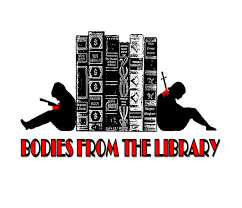
When the pandemic began, I'd never even heard of Zoom, let alone be.live or all the other ways of conducting online events. But now I must have taken part in upwards of sixty online events, plus a variety of podcasts (including one for the admirable literary journal Slightly Foxed which will be aired in June). Thankfully, the technology has been sorted out by other people and I'm very grateful to them. As a result I've been able to connect with crime readers not just in Britain but in various other places, with virtual events being run from the US, Australia, India and so on. It's been a great boon in difficult times, with two books (Mortmain Hall and Howdunit) published but no live launches or supporting events.
There are, of course, pros and cons to online events. Inevitably you don't get the same buzz that comes from a live festival or library gig. The personal connection is much more limited - a real drawback. But it's there to some extent, and that's far better than nothing. And you do save a lot of travel time - as a result, I've been able to write more than ever before during the past fifteen months. Further, an online event enables you to reach people who wouldn't be able to attend a live event - and for this reason, I suspect that an online ingredient is likely to become a component of many events and festivals in the future, even when all restrictions are lifted. People with disabilities that restrict their ability to attend in person, for instance, should enjoy much greater access to events than in the past.
Saturday was especially busy. Bodies from the Library again couldn't be held at the British Library, but this year the organisers put on a virtual version. Congratulations to Mark Green and his colleagues for all their hard and efficient work behind the scenes. The event opened with a panel in which I discussed Howdunit with Alison Joseph and Kate Ellis, and this was promptly followed by a conversation between Christine Poulson and myself about Anthony and Peter Shaffer. I also took part in a discussion at the end of the afternoon, on the question of whether every fictional detective needs a Dr Watson.
But in between times, I was also taking part in a murder mystery weekend splendidly organised by Sara West. I spent rather more than an hour fielding questions from attendees about Howdunit and the craft of crime writing. It was a lot of fun and another great chance to promote a book I'm really proud.of. Howdunit was recently nominated for a fifth award, the Anthony, which is a definite bonus.
And the reach of online events was underlined by the number of emails I received after I zoomed out (feeling, it has to be said, rather weary - I do find online events more tiring than live ones, perhaps because of my innate technoangst) of my final panel on Saturday afternoon. The reaction makes it all worthwhile.
May 14, 2021
Forgotten Book - Flush as May

P.M. Hubbard came late to novel writing. He was 52 when his first novel of suspense, Flush as May, was published, on 7 January 1963. He'd written poetry at Oxford, winning the Newdigate Prize, and spent many years as a civil servant in India prior to returning to Britain and becoming a freelance writer. He wrote for Punch, but once he'd established a distinctive niche in the suspense genre, that was the area on which he focused until his death in 1980, with occasional ventures into young adult fiction.
Flush as May reflect his literary tastes. The writing is maturing and sophisticated, with a crisp eye for the right word which is a very clear clue to Hubbard's poetic leanings. The setting was rural England, and almost all of Hubbard's books were set in the British countryside. As a young library user, keen on dramatic action and mystery, I didn't read Hubbard. His writing, from a quick perusal of a few pages, seemed too low-key and unexciting for me. I suspect I was in the majority - he won the admiration of a wide range of connoisseurs but never became a bestseller (a cynic would say he was too good a writer for that!). Now I'm older and slightly wiser, I recognise his merits.
Flush at May is in essence an amateur detective story. It begins splendidly, on May morning, when a young woman called Margaret comes across a man's body. But when she alerts the sceptical village constable, and takes him to the scene, the body has disappeared. She encounters a young man called Garrod who proves to be a fellow student at Oxford, and the two of them investigate, with Margaret taking the lead.
The story is never less than intriguing, and there are moments of drama and action, but I suppose my younger self would have felt dissatisfied by the ending, and would have found it anti-climactic. I think that, to some extent, Hubbard's inexperience as a novelist is evident. For instance, the village constable is an interesting character, but he never reappears in the story. Readers who look for a conventional resolution in the usual detective story manner will probably feel frustrated. But now I can see what Hubbard was trying to do and I'm impressed.
If you are interested in learning more about Hubbard, there are some excellent pieces and links on the Existential Ennui blog This is not a flawless book, but it's made me want to read much more of his work. My copy, by the way, although it lacks that excellent Kenneth Farnhill dust jacket which is pictured above, has an inscription to a friend on the day after publication. bearing the phrase 'but for whom...' Very appealing.



